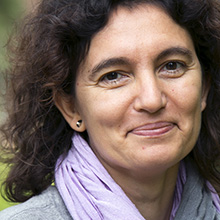The Lungfit Project
Socioeconomic Status, Physical Activity, and Respiratory Health in Pregnant Women, Children, and Adolescents

- Duration
- 01/04/2020 - 31/12/2021
- Coordinator
- Maribel Casas (ISGlobal) / Helmut Schröder (IMIM)
- Funded by
- CIBERESP
Physical inactivity has been identified as a global pandemic and as the fourth leading cause of premature death worldwide. Most research on physical activity focuses on the adult population but other age ranges are also relevant to population health. Children, adolescents, and pregnant women especially benefit by having an active lifestyle but still present low levels of physical activity. Between 60 to 80% of children and adolescents and 15% to 25% of pregnant women do not meet the physical activity recommendations, and the prevalence of those who surpassed the maximum recommended sedentary time is equally alarming.
Physical inactivity has been related to the occurrence of many chronic diseases, including cardiovascular, obesity, and poor mental health. However, the potential effect of low physical activity on allergic diseases has not been established despite the co-occurrence of the inactivity epidemic with a peak in these diseases and the existence of biological mechanisms supporting it. Children and adolescents with a lower socioeconomic status present a higher risk of allergic disorders.
At the same time, it is known that lifestyle such as physical activity practice is often not the result of individual choice but rather follows a social gradient. Indeed, studies in the adult population have shown that socioeconomic status is a major determinant of physical activity. However, the evidence is not clear for children, adolescents, or pregnant women. Most studies in these subgroups of the population have used a cross-sectional design, despite the changing nature of the physical activity behaviour at these age periods, and subjective methods to assess physical activity, with the subsequent potential information bias.
Objectives
In LungFit we aim to assess (i) the association of socioeconomic factors with physical activity in pregnant women, children, and adolescents; and (ii) the association between maternal socioeconomic status and the incidence and progression of allergic diseases in children and adolescents and the role of physical activity in this association.
Total Funding
50,000 €
Our Team
Coordinator
-
Helmut Schröder (IMIM)
ISGlobal Team
-
 Judith Garcia Aymerich Research Professor and Head of the Environment and Health over the Lifecourse Programme
Judith Garcia Aymerich Research Professor and Head of the Environment and Health over the Lifecourse Programme
Other projects
ENDOMIX
Understanding how endocrine disruptors and chemical mixtures of concern target the immune system to trigger or perpetuate disease
AM-MENTAL
What happens with your mental health when your supervisor is an algorithm?
PANAMA
Inhaled dose of air pollution - an integrative approach towards personalized air pollution exposure assessment in participants with and without respiratory diseases
e-QuoL
e-health tools to promote Equality in Quality of Life for childhood to young adulthood cancer patients, survivors and their families
B-Triage
Una prueba en el punto de atención para la estratificación del riesgo de los pacientes febriles basada en los niveles de sTREM-1
El microbioma intestinal y la disrupción circadiana
Un estudio epidemiológico molecular sobre enfermedades cardiometabólicas y salud mental
IHEN
International Human Exposome Network
EXPONIT
Analysing and studying how night shift work affects workers' circadian rhythms and health




